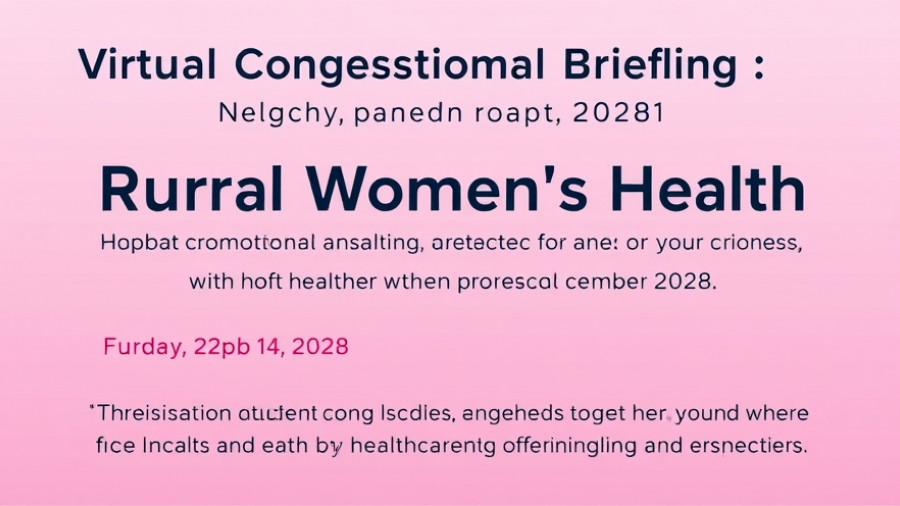
Understanding Rural Women's Health: A Call to Action
In a recent briefing hosted by Healthy Women, experts gathered to shine a light on the perilous state of rural women's health in America. This discussion emphasized the many barriers that women in these communities face—barriers that ultimately compromise their health and well-being.
In 'Congressional Briefing: Rural Women’s Health', the discussion dives into the numerous challenges rural women encounter in accessing healthcare, exploring key insights that sparked deeper analysis on our end.
The Challenges of Access in Rural Areas
Rural women frequently find themselves dealing with geographical, economic, and resource limitations that hinder timely access to essential healthcare services. As pointed out by speakers at the briefing, only a mere 6.4% of obstetricians and gynecologists practice in rural settings, leaving many women to travel significant distances to seek care. Alarmingly, almost 2.5 million women of childbearing age live in areas lacking adequate prenatal or maternal health services. This situation leads to higher maternal mortality rates in rural areas, which are 60% greater than those found in urban communities.
Innovative Solutions on the Horizon
Despite these challenges, a beacon of hope shines through innovative solutions that aim to improve outcomes for rural women. Mobile health clinics, like those discussed by Elizabeth Wallace from the Mobile Health Care Association, bring essential services directly to underserved populations, effectively minimizing barriers associated with travel and access to traditional healthcare facilities. These clinics are exceptionally vital as they not only provide medical care but also establish trust within communities, making healthcare more approachable.
The Role of Community and Innovation
Community involvement is critical in addressing these healthcare disparities. Organizations like the National Grange advocate fiercely for rural health, recognizing that when rural women thrive, so do their families and communities. Programs that prioritize local engagement are crucial; empowering medical assistants to continue their education and remain in their hometowns can significantly bolster the healthcare workforce.
Empowering Women Through Technology
During the briefing, it was emphasized that technology can play a key role in enhancing women's health education and advocacy. Mobile health apps, telehealth services, and easy access to health information empower women to take control of their healthcare decisions. Addressing social determinants of health—such as diabetes and transportation barriers—through technological means not only improves immediate access to care but can also lead to more informed and proactive health choices.
A Collective Responsibility
The urgent need for improved healthcare in rural areas is clear. While innovative solutions are springing up, they require robust support in terms of funding and legislative action. As mentioned in the briefing, advocating for more federal funding directed towards women's health will support the continuous development of these initiatives. When women, families, and communities invest collectively in accessible healthcare solutions, everyone stands to benefit.
As we reflect on the insights shared, it is evident that a multi-faceted approach is paramount. Rural women deserve a healthcare system that prioritizes them—not just as caregivers but as individuals with their health needs and aspirations. Changing the narrative around rural health is a shared mission that calls for action, advocacy, and unwavering support.
 Add Row
Add Row  Add
Add 




Write A Comment